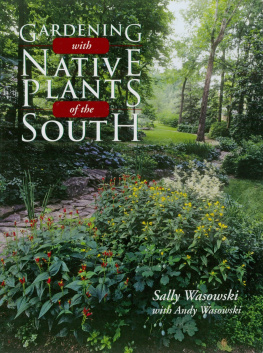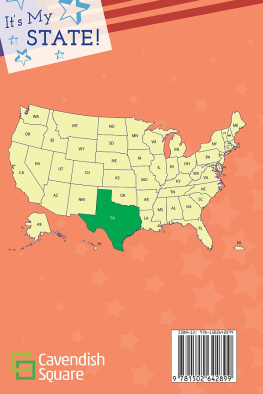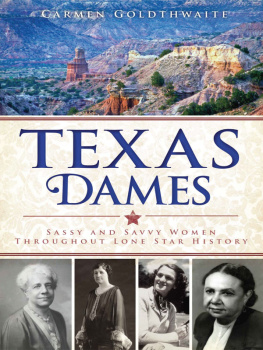Sally Wasowski - Native Texas Gardens: Maximum Beauty Minimum Upkeep
Here you can read online Sally Wasowski - Native Texas Gardens: Maximum Beauty Minimum Upkeep full text of the book (entire story) in english for free. Download pdf and epub, get meaning, cover and reviews about this ebook. year: 2003, publisher: Taylor Trade Publishing, genre: Home and family. Description of the work, (preface) as well as reviews are available. Best literature library LitArk.com created for fans of good reading and offers a wide selection of genres:
Romance novel
Science fiction
Adventure
Detective
Science
History
Home and family
Prose
Art
Politics
Computer
Non-fiction
Religion
Business
Children
Humor
Choose a favorite category and find really read worthwhile books. Enjoy immersion in the world of imagination, feel the emotions of the characters or learn something new for yourself, make an fascinating discovery.

- Book:Native Texas Gardens: Maximum Beauty Minimum Upkeep
- Author:
- Publisher:Taylor Trade Publishing
- Genre:
- Year:2003
- Rating:4 / 5
- Favourites:Add to favourites
- Your mark:
- 80
- 1
- 2
- 3
- 4
- 5
Native Texas Gardens: Maximum Beauty Minimum Upkeep: summary, description and annotation
We offer to read an annotation, description, summary or preface (depends on what the author of the book "Native Texas Gardens: Maximum Beauty Minimum Upkeep" wrote himself). If you haven't found the necessary information about the book — write in the comments, we will try to find it.
Native Texas Gardens: Maximum Beauty Minimum Upkeep — read online for free the complete book (whole text) full work
Below is the text of the book, divided by pages. System saving the place of the last page read, allows you to conveniently read the book "Native Texas Gardens: Maximum Beauty Minimum Upkeep" online for free, without having to search again every time where you left off. Put a bookmark, and you can go to the page where you finished reading at any time.
Font size:
Interval:
Bookmark:


TEXAS
GARDENS

Other books by the authors:
N ATIVE T EXAS P LANTS : L ANDSCAPING R EGION BY R EGION
R EQUIEM FOR A L AWNMOWER
G ARDENING WITH N ATIVE P LANTS OF THE S OUTH
N ATIVE G ARDENS FOR D RY C LIMATES
Copyright 1997 by Sally Wasowski and Andy Wasowski
First Taylor Trade Publishing edition 2003
Originally published in 1997 by GulfPublishing Company. Reprinted by permission.
This Taylor Trade Publishing paperback edition of Native Texas Gardens is an original publication. It is published by arrangement with the authors.
All rights reserved.
No part of this book may be reproduced in any form or by any electronic or mechanical means, including information storage and retrieval systems, without written permission from the publisher, except by a reviewer who may quote passages in a review.
Published by Taylor Trade Publishing
An imprint of The Rowman & Littlefield Publishing Group, Inc.
4501 Forbes Boulevard, Suite 200
Lanham, Maryland 20706
Distributed by National Book Network
The hardback edition of this book was previously cataloged by the Library of Congress as follows:
Wasowski, Sally, 1946
Native Texas gardens I Sally and Andy Wasowski.
p.cm.
Includes bibliographical references (p. ) and index.
ISBN 1-58979-058-8 (pbk.: alk. paper)
1. Native plant gardeningTexas. 2. Native plants for cultivationTexas. 3. Landscape gardeningTexas. I. Wasowski, Andy, 1939 II. Title.
| SB439.26.T4W37 1997 635.9'51764dc20 | 9632643 |
 The paper used in this publication meets the minimum requirements of American National Standard for Information SciencesPermanence of Paper for Printed Library Materials, ANSI/NISO Z39.481992.
The paper used in this publication meets the minimum requirements of American National Standard for Information SciencesPermanence of Paper for Printed Library Materials, ANSI/NISO Z39.481992.
Manufactured in the United States of America.
For Lynn Lowrey
who inspired, taught,
and encouraged so many of us.
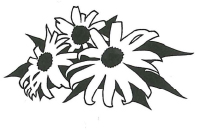
T hose of you who have just purchased the Wasowskis' fine addition to the of books on native plant gardening are, I would guess, already aware of at east some of the many benefits of using natives in planned landscapes. These include new design options; conservation of water, soil, and other resources (including time); reducing pollution and the use of chemicals; increasing wildlife habitats; and preserving regional biodiversity. These win, win, win advantages are very real and very compelling. This is why the cadre of native gardeners is expanding so rapidly.
These were the same reasons I and many others became involved in and committed to the native landscaping movement well over a decade-and-a-half ago. Not because it was commercially advantageous. In many cases, the opposite was true. We were simply convinced that it was the right idea for our times, and that it would find its audience. Our faith is being rewarded. There has been a dramatic increase, not just in native plant enthusiasts, but in good reference materials, in native stock and seed, and, as this book demonstrates, in examples of established native landscapes.
It is clear to me that by the turn of the century the concept of using regional native wildflowers, grasses, shrubs, vines, and trees in our home and commercial landscapes will have "turned the corner." It will no longer be thought of as an interesting but esoteric notion, appealing only to a select audience. It may not be mainstream by then, but it will surely be more widely accepted. The general population will have heard and understood the message. Actually, in some areas of the country, this has already happened.
Moreover, it is my studied opinion that using native plants will become common practice during the first decade of the twenty-first century and, during the second decade, will rapidly become the norm. I am comfortable predicting that well before the middle of the next century, it will be the consumptive, exotic landscape that is rarepossibly seen only in botanic gardens as museum-like exhibits and reminders of a more profligate past.
It took two centuries to establish our current norm of resource-wasting, homogeneous, and poorly adapted North American gardens. Why then do I think it will take less than a half century to replace such an ingrained way of landscaping? Primarily because the inpetus for change will be much more urgent. Water shortages, which affect a major portion of our country, will drive up the cost of this precious resource, making today's conventional landscapes not only impractical, but possibly even unpatriotic!
The causes of chemical pollution from our lawns and gardens; diminishing numbers of birds, butterflies, and other wildlife; and related problems are now being understood by more and more average citizens. And, so are the solutions. In addition, we are less willing to blandly accept and imitate what, for so long, has been considered elegant and exotic in European gardening. We are developing a healthy national and regional pride in our own natural and native beauty. A new land ethic is emerging all around us.
So I invite you to join Sally and Andy, all of us at the National Wildflower Research Center, and many thousands of other Americans and begin enjoying the many positive pleasures of gardening with plants native to your region. And feel good that you are among the first wave of people doing something important for our land and our natural resources. Becoming a native plant gardener is not only fun, it is attractive ... and it is right!
David K. Northington, Ph.D.
Executive Director
National Wildflower Research Center
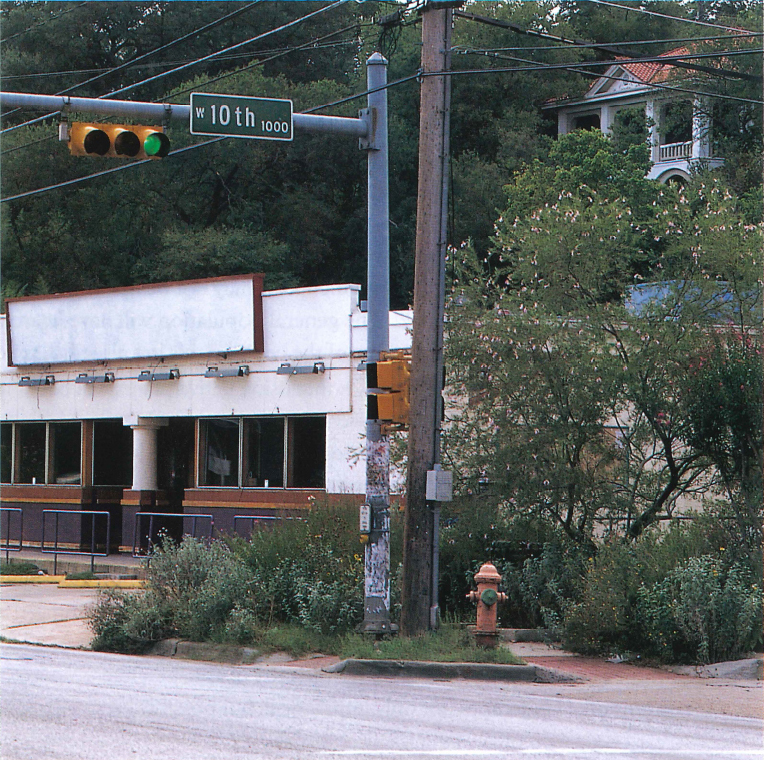
If you need convincing that native plants are hearty, take a look at this landscape outside what was once a Whole Foods Market in Austin. When the store moved to a new location, the landscape was abandoned. From March to August, when this photo was taken, the vegetation didn't get a single drop of water except for whatever rain fell on it. You can see that the plants, including a few well-adapted naturalized specimens, are still healthy, and many are still in bloom.
T his book is not the one we'd first had in mind. Our initial concept was to native gardens around the state, going into a fair amount of detail on each hy ten? Because they were the only good ones that we knew about. But just in case there might be a few more lurking out there, we ran a short notice in the Native Plant Society newsletter. We said we were working on a sequel to Native Texas Plants to be called Native Texas Gardens and we hoped people would share their gardens with us.
We'd expected, at best, another four or five responses, with most of them being, for one reason or another, unsuitable. What arrived in our mailbox was a small flood of letters with enthusiastic descriptions (and in many cases snapshots) of well-thought-out and executed gardens. Some were created with the help of professional landscape architects and designers, but a surprising number were created by the homeowners themselves. With this wealth of resources before us, we realized that the theme of our book would no longer be merely how a handful of people had created their gardens, but rather how widespread the native plant movement had become in just a few short years. Here, then, are the people who made this book possible:
Next pageFont size:
Interval:
Bookmark:
Similar books «Native Texas Gardens: Maximum Beauty Minimum Upkeep»
Look at similar books to Native Texas Gardens: Maximum Beauty Minimum Upkeep. We have selected literature similar in name and meaning in the hope of providing readers with more options to find new, interesting, not yet read works.
Discussion, reviews of the book Native Texas Gardens: Maximum Beauty Minimum Upkeep and just readers' own opinions. Leave your comments, write what you think about the work, its meaning or the main characters. Specify what exactly you liked and what you didn't like, and why you think so.

